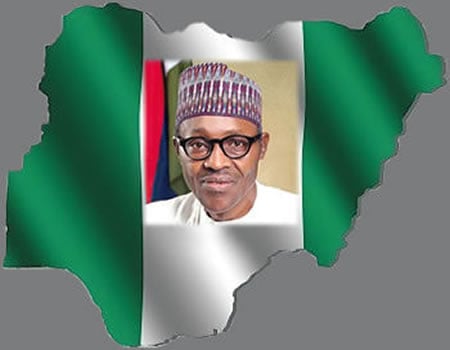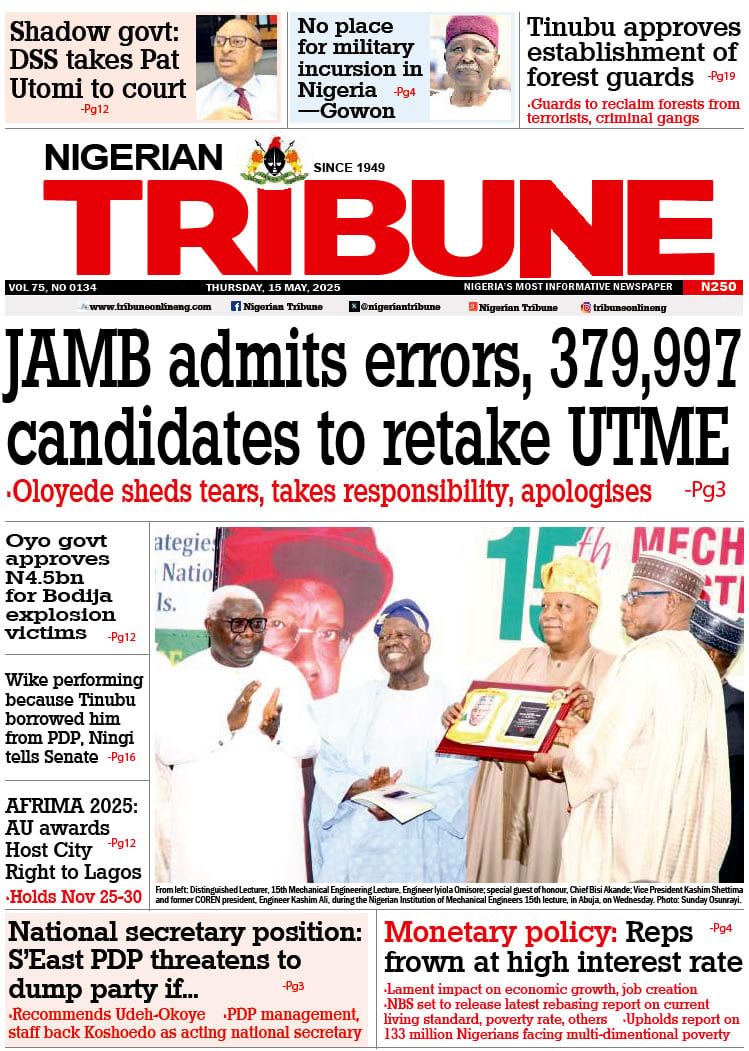MANY Nigerians of voting age remember the dire newspaper headlines that sang the nunc dimittis for the last PDP administration at the centre. The reminders of the shutdown by various bank, media houses and telecommunication services on account of prolonged power outage and eventual diesel rationing are indeed painful. It got so bad that even the black markets ran out of fuel. Equally galling is the reminder of long queues at the filling stations to purchase few litres of elusive fuel for domestic needs. Many civil servants still carry the relics of those years; the carry-over of unpaid salaries that started in the years of huge earnings from crude oil sales and the scandals of missing remittances to the Federation Account. Even federal workers were not spared! It all seems so distant. But how far have we come? Have we fared better in the last three years looking at the relevant sectors?
The answer is obvious for any resident of Nigeria. Barring a few days interruption, we are currently witnessing the longest stretch of undisturbed fuel availability within a 3 year period. This of course is mainly as a result of short term measures. The long term solution- increase in local refining capacity seems to be on track and is scheduled for completion in 2019. Notably, the Dangote refinery Project is being put together at break-neck speed largely due to financial guarantees from the Federal Government. That project is due for completion soon, likewise modular refineries licensed just in 2015. This is another favorable comparison with the past. Many would recall that several refinery licenses were issued in 2012 as an aftermath of the fuel strikes of January 2012. Those 2012 licenses never gave rise just 1 barrel of refining capacity. Still on the comparisons, May 2015 closed with news of billions of outstanding salaries to civil servants all over the country. The story is largely different now.
The Federal Government gave bail out after bail out and indeed most states have complied. Note that these arrears emanated from the pre-May 2015 months of zero allocation. Apart from giving civil servants their due, the Federal Government has also expended an unprecedented amount on social investment programmes such as Trader Moni, Home Grown School Feeding Programme, N-Power and Conditional Cash Transfers In this period also, Nigeria’s import bill has dropped from $665.4 million to $160.4 million monthly. As a further outcome of the import substitution initiatives of this government, a cumulative $21 billion has been shaved off food imports from 2015 to October 2018.Do we need further proof of the success of the anchor borrowers’ scheme for targeted agricultural produce? Are we at the promised destination yet? No! Are we on track? Most certainly and resoundingly, yes!
The key question now is whether this government can and will take us to the next level of our country’s growth. Indeed, the Federal Government has published its plans for sustainable growth tagged the ‘Next Level’ document. Would this really take the economy to the next level? Would it keep our economy on track? In the document, the Federal Government targets the expansion of the Anchor Borrowers’ scheme to support the mechanisation of crop and livestock farming. Particularly, the plan is to create at least 5 million jobs around that value chain and further reduce Nigeria’s food import bill. Until the advent of the current administration, poor access to credit has been the bane of our small scale agri-businesses. A substantial percentage of farm produce end up wasted due to the dearth of modern storage facilities. Low interest loans to cooperatives would allow syndicated acquisition of these facilities, increase income from harvests and ultimately a better quality of life for the farmers.
To supplement the above, a segment of the graduates from the N-Power scheme would be available for absorption in the agriculture initiatives. This would allow them deploy skills acquired towards productive and profitable use. The Next Level document also specify that these agriculture initiatives shall provide raw materials for local productions, especially the 6 Regional Industrial Parks and Special Economic Zones and the 109 Special Production and Processing Centres (SPPCs) currently being developed in all the geographical zones of the country. The targets are to spur local production, value additive processing and ultimately capture the ECOWAS market as a whole. What ties all of these together is power and road infrastructure. The Next Level document envisages the completion of the 2nd Niger Bridge as well as on-going road constructions and repairs in various parts of the country. The Lagos-Abeokuta-Ibadan Rail project is billed for completion in the 1st quarter of 2019 whilst the Ibadan- Kano sector, the Eastern Rail and Coastal Rail Projects are billed for the 2nd Term of the Buhari Presidency.
These projects once completed would ensure faster movement of raw materials and products to the factories and markets. The linkage to the ports would also ensure easy exports. With our recent history, naysayers that call the Next Level document a rosy picture that may be difficult to implement can be forgiven. However, dispassionately assessment of the situation on ground shows that these plans are currently being implemented painstakingly. In fact, even the plans to resolve Nigeria’s seemingly intractable power problem are being executed via various initiatives. The Next Level document summarises the initiatives for power. In the plan, the government targets clean and uninterrupted Off-Grid Power provisioning for certain sectors such as schools (9 universities in the first phase) and commercial centers (300 Markets around the country overall).
These are currently being implemented; in fact the power provisioning for Sura market in Lagos and Ariaria market in Aba are in the final stages of completion.
Another milestone that is within reach is the yearly incremental generation of a minimum of 1,000 MW Power on the Grid and enhancement of the distribution capacity to a full 7,000 MW under Distribution Expansion programme.
One of the visible drivers of this initiative is the Niger Delta Power Holding Company Limited (NDPHC).NDPHC was set up as an emergency intervention scheme to tackle the power supply deficit and expand power infrastructure in the country.
The company’s key mandate was to develop ten (10) power plants with capacity of 5,067MW, 102 transmission lines and substations projects, over 291 distribution- injection sub stations and gas infrastructure with over 22,000 completely Self Protected transformers among other critical projects.
So far, the NDPHC has completed about 4,015 MW capacity, representing about 80% of its mandate. Full deployment however depends on gas availability and transmission grid capacity which is also being worked on.
With regard to the transmission grid, the NDPHC has completed 2,194km of 330kV transmission lines and 809km of 132kV transmission lines. 10new 330/132kV substations and 7 new 132/33kV substations have also been completed with several other existing substations significantly expanded thereby adding 5,590MVA and 3,313MVA capacity to the national grid.
In the area of distribution, the NDPHC completed about 350 injection substations with total capacity of 3,540MW. In addition, it has constructed a cumulative 2,600km of 11kV and 1,700km of 33kV distribution lines respectively aimed at easing the last mile delivery of electricity to end users.
The NDPHC has also embarked on a novel but ambitious Solar Home Systems (SHS) project which aims at powering rural communities across the country with solar electricity. Tagged “NDPHC beyond the Grid”, NDPHC has commenced a pilot scheme of 200 units targeting homes within Wuna, a fairly populated town within the FCT. Once this succeeds, about 1,073 solar powered boreholes would be reactivated to provide clean water for the affected communities.
Any keen observer of developments in Nigeria in the last 3 decades would be justified to sneer at FG’s documented plans. It is often stated that planning is not the major problem. Rather, poor execution is the bane of the brilliant National Development plans of the past.
How then are the current FG and its Next Level document different? From a keen observer’s perceptive, I dare say that never has any government since the 1980s done so much with so less resources.
Each of the States of the Federation has one infrastructure project or the other on-going; all currently funded by the FG. We are also witnessing development of the Railway sector at a scale unprecedented since independence. The testimonies from the various beneficiaries of the National Social Investments Programs also lend credence to the popular belief that this government means what it says. As citizens, our recent experiences tell us not to rely 100% on social media. Let us travel the land, see and verify the quality of these projects.
Is it workable? A few government and private sector led social intervention initiatives exist around the world. Notable examples are China, Bangladesh, Mexico and Brazil with initiatives like Oportunidades, BolsaFamilia, Grameen Bank. Those initiatives succeeded in other countries and with the right execution in Nigeria, they would reduce poverty in Nigeria.
The final positive outcomes of the intricate execution would not be fully felt within 3 or 4 years. If however we give the required benefit of doubt and also play our parts, Nigeria would indeed break its chains and rise as a real giant in the sun.
- Ola, an economic analyst, writes in from Lagos






